viz blog
Major Performers
CREATED — 2022-06-15 | DATA UPDATED — 2025-12-29
The scatterplot below plots true strokes-gained performance in majors (y-axis) versus true strokes-gained in non-majors (x-axis) for 434 players since 1983.
To make the comparison as informative as possible, we apply the following restrictions to the underlying data:
1) players must have played at least 10 Majors
2) only tournaments where the player was between 20 and 40 years of age are included
3) only data from years where the player participated in at least one major is included
1) players must have played at least 10 Majors
2) only tournaments where the player was between 20 and 40 years of age are included
3) only data from years where the player participated in at least one major is included
Non-Major Strokes-Gained
Major Champ Strokes-Gained
Green diagonal highlights where non-major performance = major performance. Players above diagonal have over-performed in majors; players below have under-performed.
Observations
It looks as though fitting a line through the data points would yield a steeper slope than the green diagonal.
This means that better players are more likely to fall into the "over-performers" category, and worse players are more likely to be "under-performers".
This shouldn't be that surprising as we know major championship setups/venues, on average, place an emphasis on the skills typically held by the game's elite players (mainly driving distance).
Despite his incredible Major record, Tiger didn't significantly outperform his non-major baseline in majors.
As expected, Brooks Koepka is positioned furthest above the green diagonal. His performance in majors is 1.4 strokes per round better than in non-majors. Ricky Barnes and Tommy Tolles have the next highest differences (obviously).
Max Homa, Steve Marino, Johnattan Vegas, and Ian Baker-Finch are a few notable under-performers.

 Data Visualization Gallery
Data Visualization Gallery
Bomber's Paradise
2021-12-23
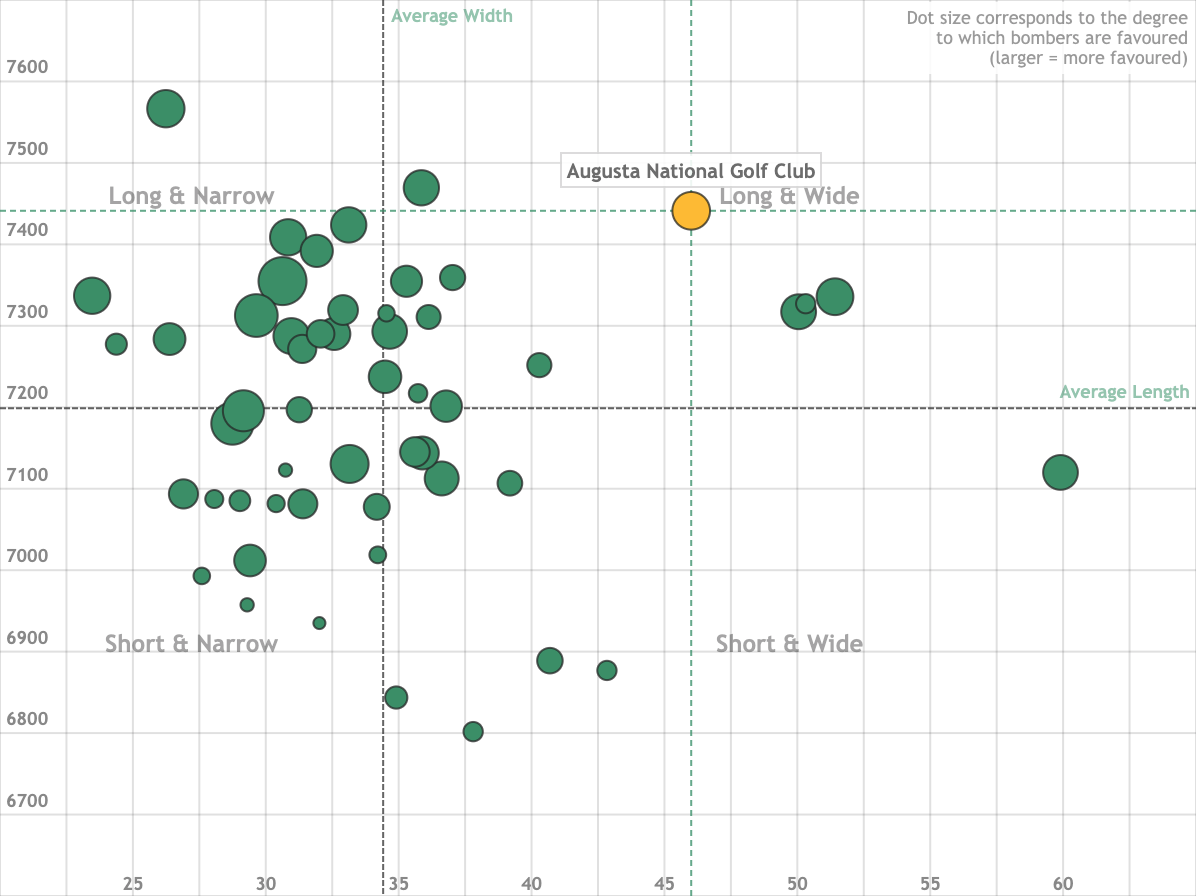

Visualizing the relationship between course length, fairway width, and favourability towards bombers.
Golf Gods Giveth..
2021-12-30


A detailed look at how Bryson DeChambeau's skill profile shifted after chasing, and finding, club head speed.
Peaking for Augusta
2022-04-04

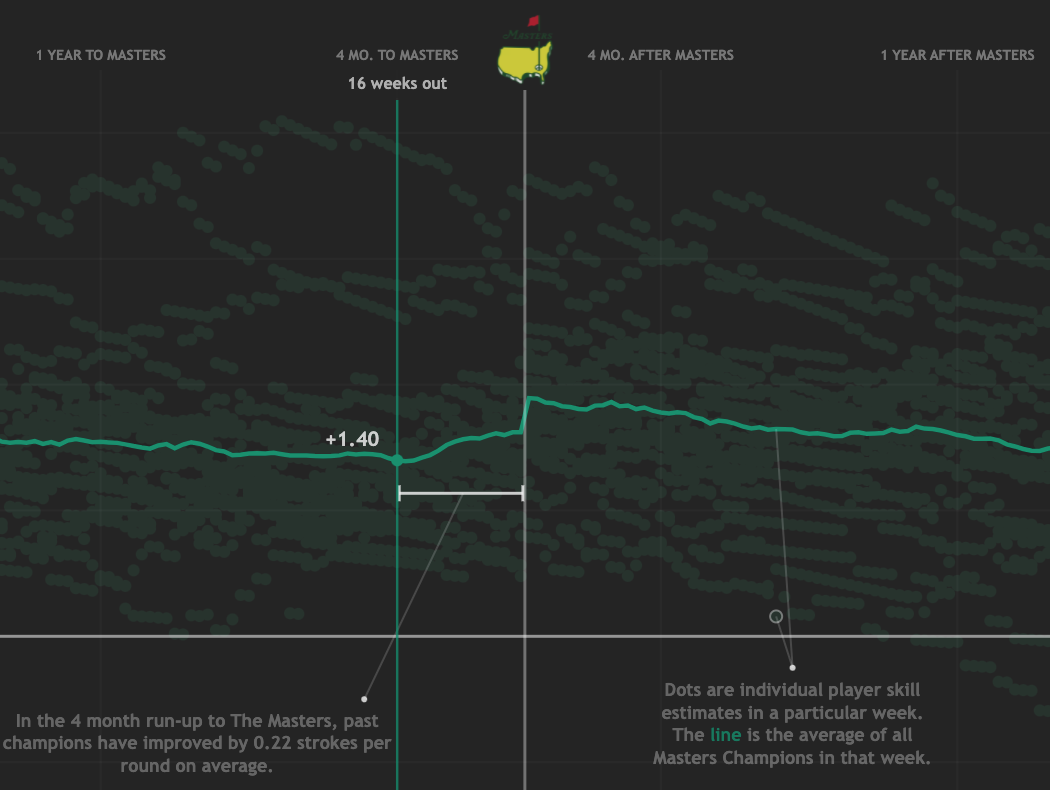
Who is walking the path of a Masters Champion?
Major Performers
2022-06-15

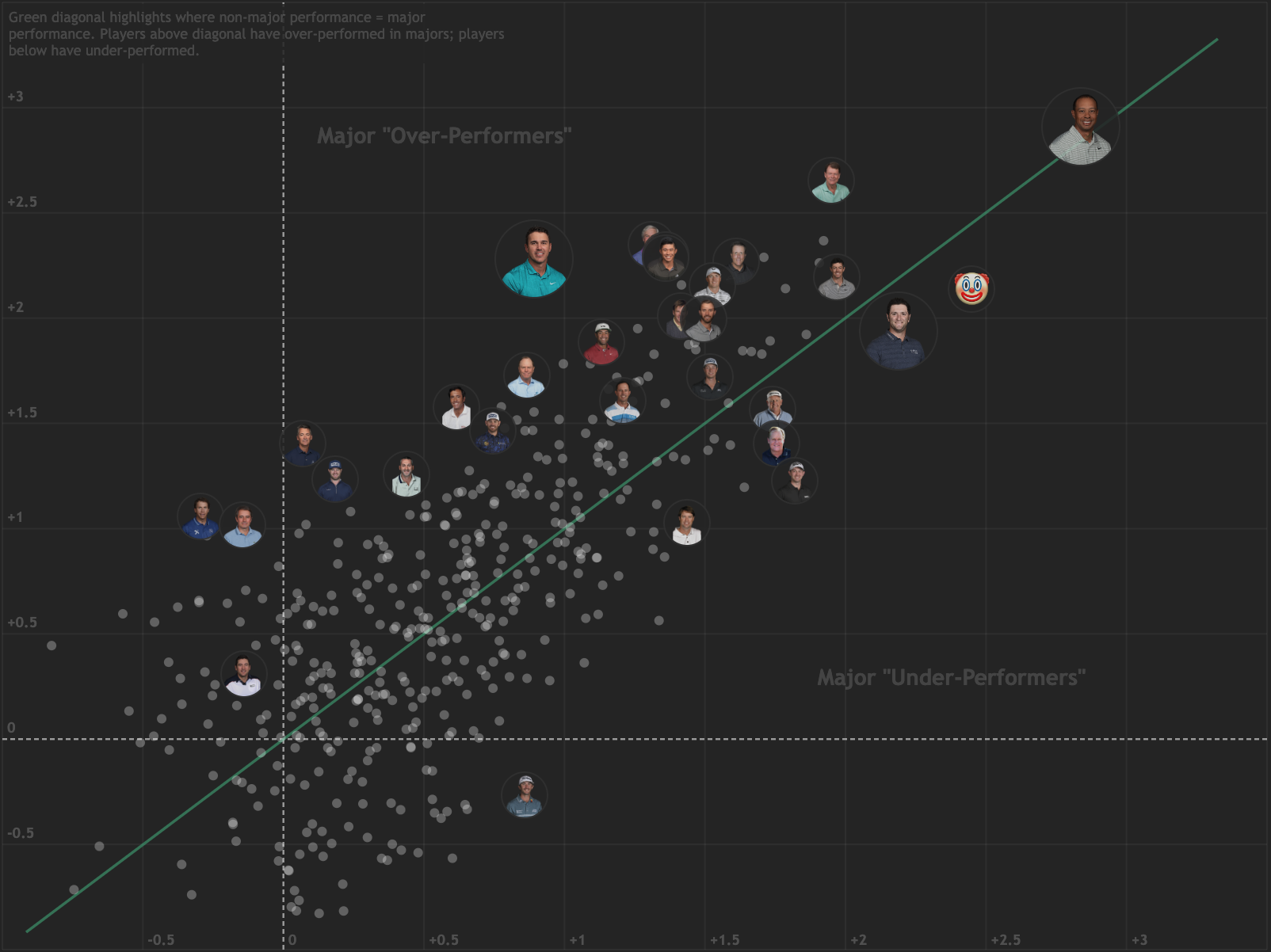
Who steps up their game most at Major Championships?
Performance Map
2022-07-12


Visualizing how players from different countries perform around the world.
A Short-Lived Celebration
2022-10-16
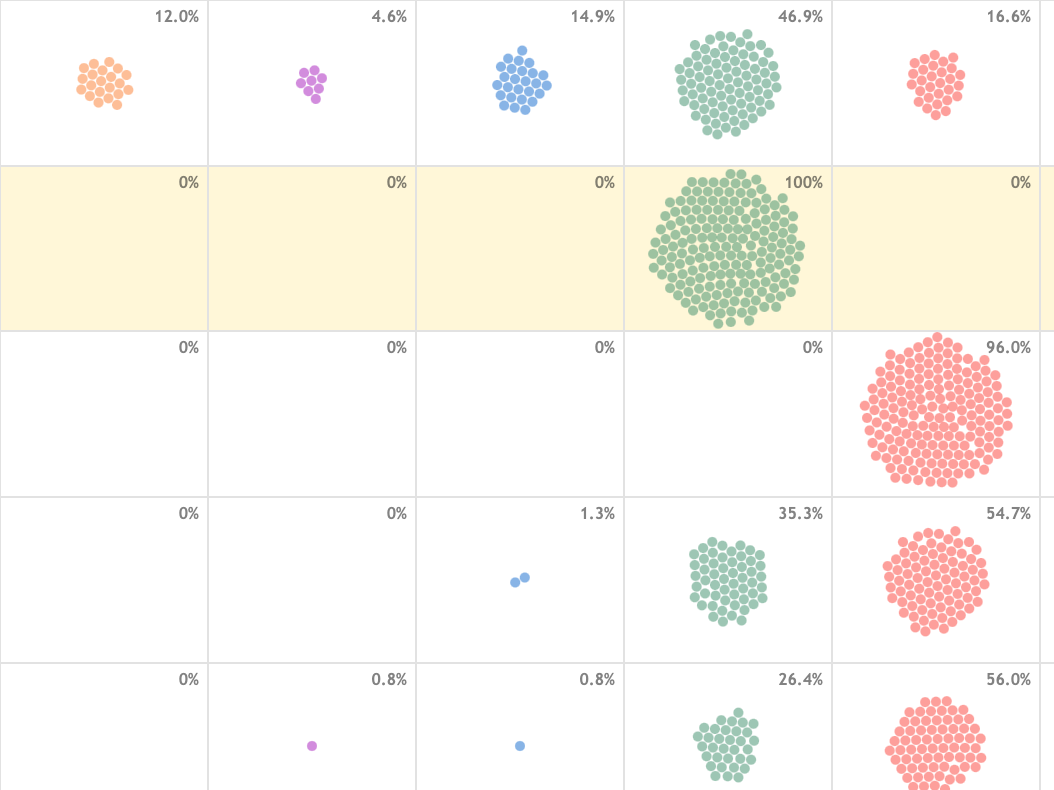
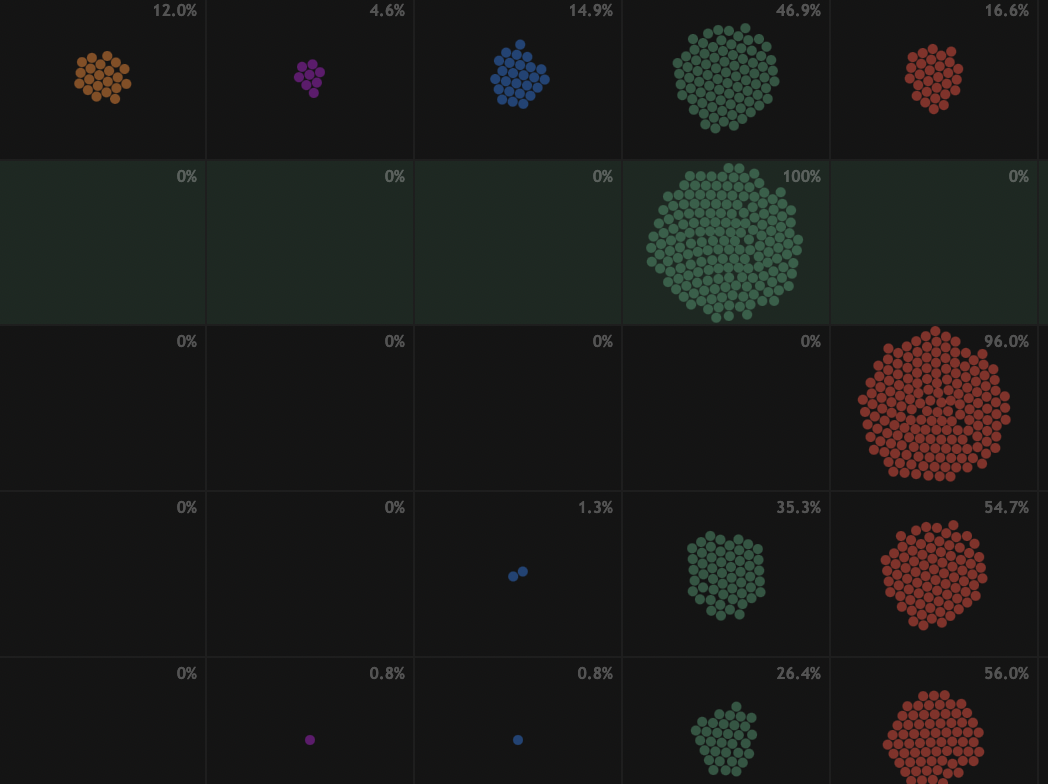
Keeping tabs on 175 Korn Ferry Tour graduates.
When it Rains, it Pours
2023-01-14


Exploring the mysterious link between Collin Morikawa's putting and tee-to-green performance.
Does Augusta Play Favourites?
2023-04-01


Using data visualization to test Augusta National narratives.
The Skill Dist'n of Major Champions
2023-05-15


Plotting the skill distribution of the past 112 Major Champions.
The 10th at Riviera
2024-02-14

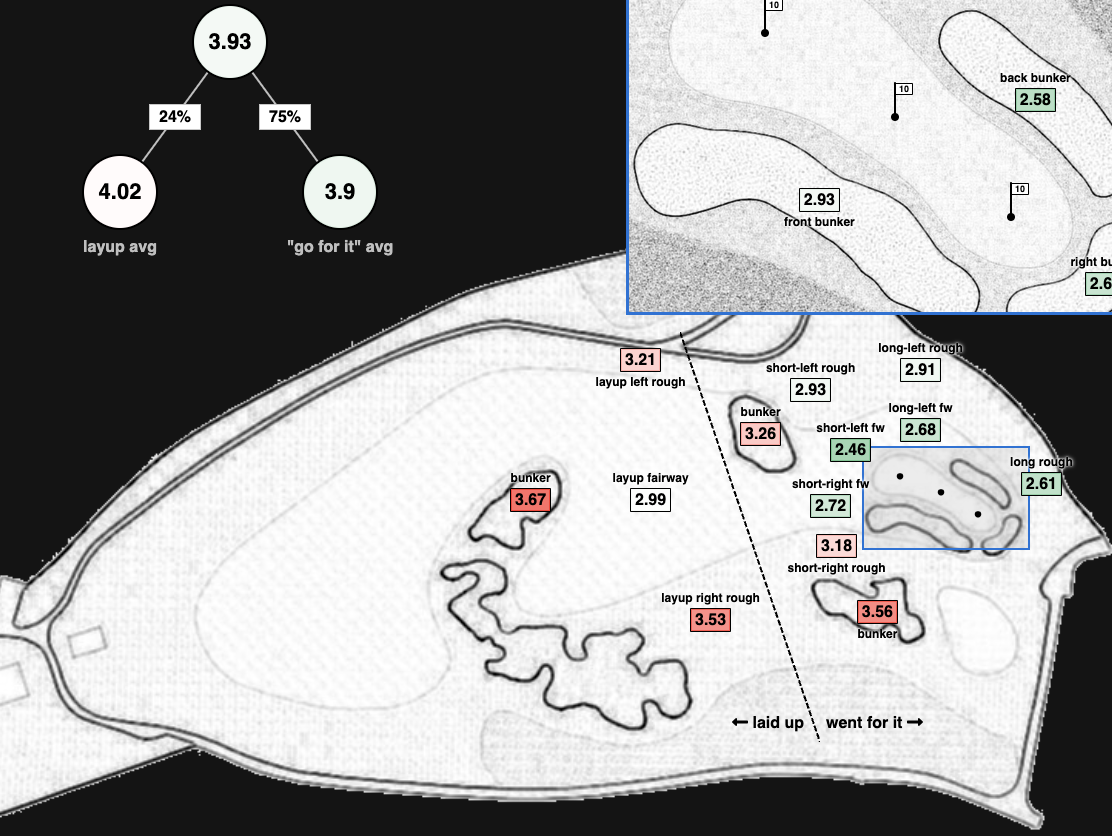
Plotting the average strokes to hole out from various locations.